Signal Strength : “Am I in a strong signal area ?”
Also see actual real world signal levels
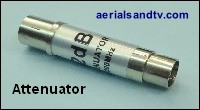
This is one of the most important articles on this entire website, read it carefully !
You can try the Freeview postcode predictor (always click "detailed view") but all predictors can be inaccurate, and in those instances the article on this page should help.
Signal strength and signal quality aren’t be the same thing but generally speaking if you’ve got high signal strength at the (unamplified) aerial it’s likely the signal quality will also be good, excluding co-channel interference problems, obviously.
The potential range of signal strengths available throughout the country is huge !
Some people live in such a poor area that even a “high gain” grouped XB16 aerial on an extra high pole, and with a mast head amplifier, will still not get them a reliable signal.
Others, living within sight of a main transmitter, will get a perfect picture with a “set top” aerial or (in some cases) just the lead into the tuner, i.e. no aerial at all !
Although a Yagi10K, Log36 or DM Log aerial will work fine in up to 90% of (outside) installs we would usually recommend a different antenna if you live in a poor reception area (though bear in mind that post switchover there are many more locations in strong signal areas). Thus, in order to choose the best aerial, it is very helpful to know the signal strength in your location. For those who do not know the latter, and most people don’t, there are a few pointers one can use to discover this. You could try one of the signal strength prediction websites, but I have to tell you they aren’t always very accurate.
Remember you can have too much signal, the latter can actually contribute to interference. That said, it’s usually pretty easy to add an attenuator to reduce the signal level and that (if used with a high gain aerial) will also improve your signal to noise ratio.
From the point where the aerial would be mounted can you see the transmitter ? If so, and the transmission pattern is not restricted, then it’s a fairly safe bet that you’re in a strong, or very strong, signal area (though this may not be the case if it’s only a small, e.g. 10W output) repeater transmitter. In fact it may even be the case that you don’t need a different aerial, you need an attenuator !
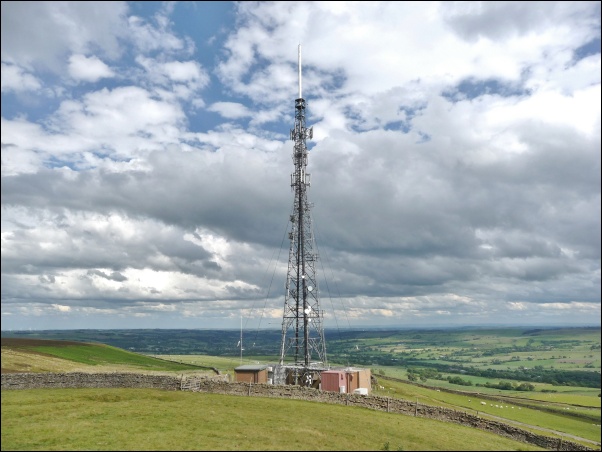
Aerials never work as well in lofts as they do outside so if you intend to site your antenna inside it may be wise to go for a slightly higher gain type. However, particularly since the 2009 to 2012 digital switchover, when the power was increased significantly, many loft aerial will work perfectly well. See page on "Loft aerials".
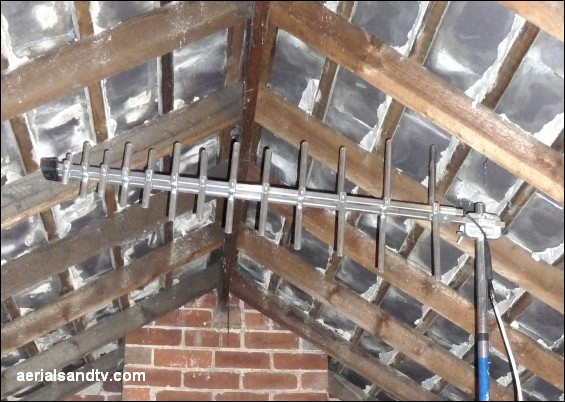
Apart from the above, checking the signal level using a “set top aerial” (preferably in the loft) is the easiest and most accurate test that anyone can undertake without an RF meter or local knowledge, or getting out on the roof ! If you get reasonable pictures on all available channels you’re in a pretty good signal area. But remember, if aligning onto an alternative transmitter, you must retune your TV !
The set top aerial we sell will give about 3 to 4 dBd of gain (though that's towards the top end of set tops, gain from amplified set tops is not relevant ), a DM log will approximately double this, see "Set Top aerial" v DM Log. Putting an aerial outside gives another 30 to 70%, or more (see aerial ridge tests). The relative signal levels of all our other aerials can then be found on ATV's aerial gain tests.
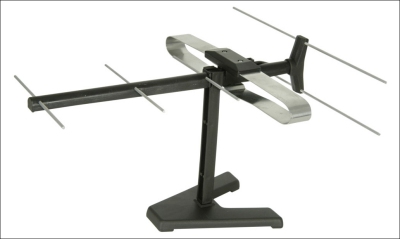
Do your neighbours get good signals on all the available channels and do they need amplifiers or “high gain aerials” to do so ? Having said that many people use amps or high gain aerials when they don’t even need to, particularly if an installer is trying to “sell the job up”.
On the other hand, remember there are RF dead spots around.....
Are you up high or in a dip ? This is probably more important than the distance from the transmitter, within reason obviously ! The higher up you are the better your signal is likely to be and , assuming you’ve got “line of sight”, you’ll get massive signals if you’re at 1000ft.
Unfortunately being in a valley has the opposite effect......
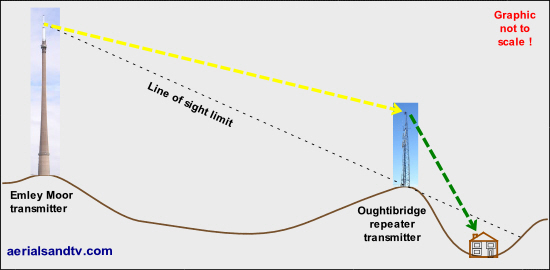
How far away is the transmitter ? This is actually less important than many of the other mentioned points, but obviously the signal weakens the further away you are. Provided you have a clear view towards the transmitter, even a distance of 30 miles from a 200kW main transmitter (such as Sutton Coldfield) should still give you a pretty strong signal.
Lastly, the 64 thousand pound question, do you have obstructions between you and the direction of the transmitter?
Line of sight is (almost) everything.
Potential problems could be caused by hills, high buildings or trees ? In the case of the latter I would go for the highest gain aerial (the use of a grouped antenna, if possible, becomes even more important) in an attempt to minimise multi path reception. This use of a high gain or grouped aerial is recommended even if you then need an attenuator to knock the signal level back down. In any event where trees are involved (or RF dead spots) all bets are off. It may work fine or it may not, you can only do your best and hope, after all, who knows the secret,
of the Black Magic box.......
Also see Bill Wright’s advice leaflet on Reception through trees, this was written in analogue days but the principles are exactly the same.
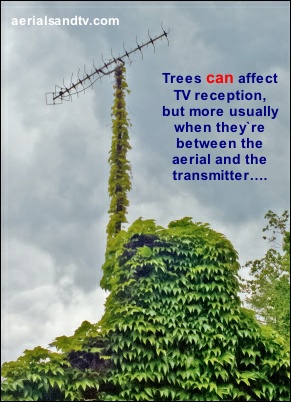
Lastly, a reminder just to hammer the point home, see actual signal levels = how big a signal is available at some sites, and how many ways you can split the signal without an amplifier !

